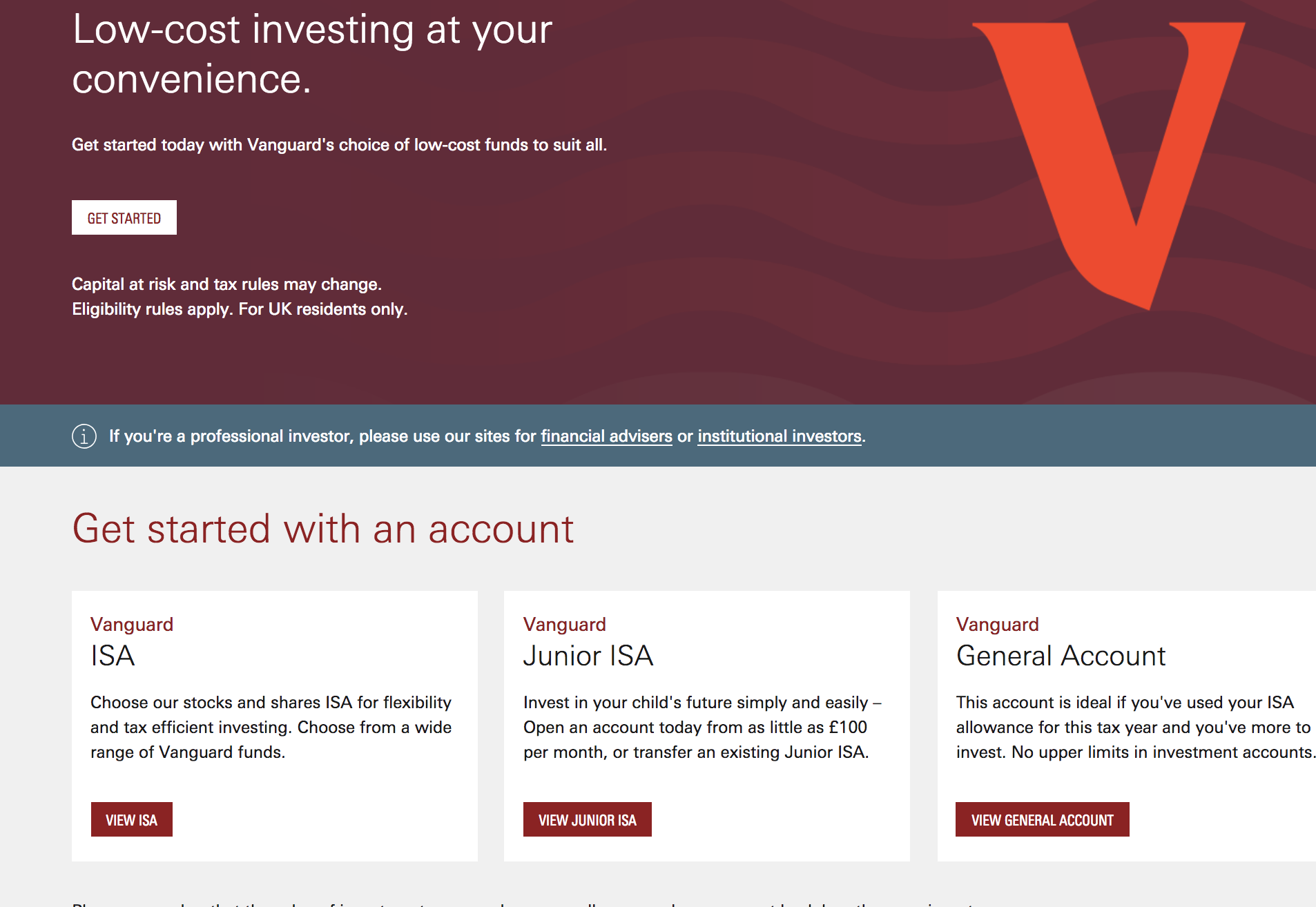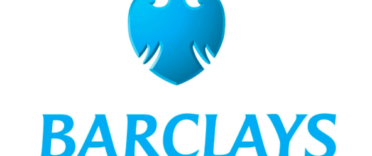 In this independent Vanguard Investor review, I look at how the fund platform stacks up against its competitors in 2025 following its decision to introduce a minimum fee of £4 per month from January 2025. I look at Vanguard's fees versus its competitors as well as the funds available. In addition, I objectively analyse the Vanguard fund performance to help investors decide which Vanguard funds to invest in should they decide to use Vanguard Investor. I also reveal the cheapest way to actually invest in Vanguard funds (and it's not simply to buy them through Vanguard Investor, which most investors don't realise)
In this independent Vanguard Investor review, I look at how the fund platform stacks up against its competitors in 2025 following its decision to introduce a minimum fee of £4 per month from January 2025. I look at Vanguard's fees versus its competitors as well as the funds available. In addition, I objectively analyse the Vanguard fund performance to help investors decide which Vanguard funds to invest in should they decide to use Vanguard Investor. I also reveal the cheapest way to actually invest in Vanguard funds (and it's not simply to buy them through Vanguard Investor, which most investors don't realise)
Finally I look at the alternatives to Vanguard Investor out there. If you want to jump to specific parts of this review then you can do so by clicking on the links below:
- The cheapest way to invest in Vanguard funds
- What are Vanguard's fees?
- Are Vanguard tracker funds the cheapest?
- How does Vanguard Investor work?
- Vanguard's fund performance
- Which Vanguard Lifestrategy fund is best for you?
- Vanguard vs other robo-advisers
- Vanguard investment alternatives
1 minute summary - Vanguard Investor review
- Invest from as little as £500
- Invest in a Stocks and Shares ISA, Pension, Junior ISA and general investment account
- Minimum monthly fee of £4 will be introduced from 31st January 2025 for customers opting for a self-managed ISA, SIPP or General Investment Account
- Annual account fees of just 0.15%, capped at £375
- Vanguard LifeStrategy funds offer 5 different blends of equities and bonds allowing investors to target a level of risk and return that is right for them
- Interactive Investor* can offer a cheaper way to invest in Vanguard funds if you have more than £40,000 to invest
Who is Vanguard?
Vanguard Asset Management (known simply as Vanguard) is authorised and regulated in the UK by the Financial Conduct Authority (FCA). Vanguard was founded in the US by John Bogle in 1975 and made its name by offering low-cost index-tracking funds which are among the best and cheapest index-tracking funds to invest in. Vanguard is now a global brand and there are over 50 million individual investors worldwide who own Vanguard funds.
What makes Vanguard stand out as an asset management company is that it is owned by the funds that people invest in rather than by shareholders. This supposedly means it is more focused on good investor outcomes rather than profit.
How to invest in Vanguard funds
Historically UK investors have only been able to invest in Vanguard funds through either an investment broker or fund platform, such as Interactive Investor, Fidelity or Hargreaves Lansdown. However, Vanguard now has its own investment platform called Vanguard Investor which sells its existing range of tracker funds directly to consumers cheaper than any other fund platform in the UK.
What is an investment tracker fund?
To understand what an investment tracker fund does (and what Vanguard specialises in) it helps to understand the difference between active and passive investing first.
Passive vs Active investment
If you are looking to invest in funds there are two main strategies – active management and passive management (I explain the difference between the two below). Vanguard specialises in the latter but does offer a limited number of actively managed funds. There is a lot of debate over whether active funds or passive funds are best to invest in. However, every research white paper I've studied that claims either methodology is better than the other always makes one flawed assumption. That assumption is that you have to buy and hold a fund almost indefinitely. Investors can boost their returns by regularly reviewing their investments and making changes where appropriate, they certainly should not buy and hold indefinitely. The other flawed assumption is that it is a binary choice when deciding between active and passive funds. Of course, both strategies (active or passive) have their place and will outperform one another at different times.
What is active management?
- Actively managed funds are run by fund managers who, together with their investment research teams, make all the decisions on what to buy and sell within a specific fund
- Each fund will have a clear investment focus and level of investment risk as stated on the fund's factsheet
- The aim of the fund is to provide an above-market return and to outperform their competitors
- The investor will know that their money is being tactically managed (or at least supposed to be) to take advantage of opportunities that may arise and reduce any potential losses
What is passive management?
- Passive managed funds aim is to track their chosen market index
- These funds are effectively run by a computer with minimal intervention by fund managers
- Typically passive managed funds have much lower fees than active funds which has a positive impact on performance when compared with an active managed fund
- Passive funds will reflect the performance of their chosen index whether that performance is positive or negative
What is an investment tracker fund?
Investment trackers are passive funds that aim to mirror the performance of a selected stock market index, such as the FTSE 100, or the price of an asset. An investment tracker fund does this by buying shares, in the case of an equity index, in the relevant proportions in order to replicate the index in question. So rather than an investor having to own all of the shares themselves, which would be expensive and cumbersome, they instead invest in an investment tracker fund and benefit from the economies of scale. This is a form of passive investing and more often than not is managed and run by a computer algorithm rather than by a fund manager. This radically brings down the cost of running the fund and ultimately the cost to invest into it.
Individual fund houses decide how best to replicate the performance of an index via an investment tracker. This is typically done in one of two ways.
- Full replication – this is where the fund invests in all the constituents of the chosen index using the same weightings to closely match the makeup of the index. So in the case of the FTSE 100 they would invest in all of the companies in the FTSE 100 in the same proportion as they are represented in the FTSE 100 Index.
- Partial replication – rather than invest in every constituent of an index the tracker fund instead invests in a representative sample of the index. To do this the investment tracker fund may only invest in a certain number of companies from a given sector or geography. This in turn reduces the number of holdings which makes it easier to manage while also reducing the transactional costs.
These two categories can be split further. There are two ways in which index trackers can perform the actual replication. They can use physical replication (where they own the asset), or synthetic replication (where they use financial instruments to replicate the performance of the asset they are trying to track).
Also, trackers typically come in two structures, namely unit trusts (OEICs) or exchange-traded funds (known as ETFs). Unit trusts are the most prevalent type of fund and are available via most Stocks and Shares ISAs and pension products. Unlike unit trusts, which are priced and traded once a day, ETFs can be traded more like shares. That means you can trade them throughout the day which allows you to move in and out of markets quickly. However, bear in mind that most investment platforms will charge additional fees for investing and trading in ETFs. Investment trackers is where Vanguard excels.
Does Vanguard produce the best investment tracker funds?
The best investment trackers are those that closely track their chosen asset or index (with a minimum tracking error) and that also keep costs to a minimum. Preferably they should also track the asset or index by fully replicating it and physically purchasing the required assets or shares to do so. The reason why physical replication is preferable, as opposed to synthetic replication, is because the latter mirrors the performance of the asset using financial derivatives. That means that a third party is involved to deliver the returns that the investment tracker is trying to replicate. Of course, that then introduces the risk that this third party goes bust, which is known as counterparty risk.
Vanguard's funds physically replicate the indices they track, by either using full replication or, more commonly, a sampled replication.
What are Vanguard's fees?
One of the major attractions of Vanguard funds and its investment platform is the low cost.
Vanguard's platform fee
Vanguard Investor charges:
- an annual account fee of 0.15% on investments up to £250,000 which is less than half of the industry average.
- over £250,000 there is no annual account fee. That means that there is a maximum platform fee (annual account fee) of £375. This is incredibly cheap but actually not the cheapest way to own Vanguard funds, which I will shortly come on to.
- Vanguard has announced that it will introduce a minimum monthly fee of £4 per month from 31st January 2025. This does not apply to Junior ISA accounts or those invested in a managed ISA or SIPP
Vanguard fund charges
- Vanguard's ongoing fund charges range from 0.06% to 0.78% which again is far lower than the industry average. In October 2019, Vanguard lowered the ongoing charges on 36 of its funds bringing the average ongoing charge figure down to 0.20% (compared to 0.34% 10 years ago). There are occasional fund entry charges of between 0.20% to 0.80%, where applicable.
- There are no transfer fees and no dealing charges applied
Vanguard management fee
Those opting for a Vanguard Managed Stocks and Shares ISA or Managed SIPP will pay a management fee of 0.30% in addition to the 0.15% account fee and average fund charges of 0.15%. The management fee will be reduced to 0.20% from 31st January 2025.
Does Vanguard pay interest on cash balances?
Yes. Vanguard regularly reviews the interest rate it pays on cash balances and currently pays 2.35%. Interest accrues daily and is usually paid on the first working day of the month.
Are Vanguard tracker funds the cheapest?
The table below compares two of the leading FTSE 100 trackers over the last 3 years, one from Vanguard and one from Invesco. I also show the data versus the FTSE 100 which is the index that both FTSE 100 trackers are trying to replicate.
| Name | 3 year Total Return % | Tracking Error | Volatility | Annual charge (OCF) % |
| FTSE 100 | 28.39 | n/a | 12.31 | n/a |
| Vanguard – FTSE 100 UCITS ETF | 27.94 | 0.06 | 12.32 | 0.09 |
| Invesco – FTSE 100 UCITS ETF | 26.81 | 0.01 | 12.31 | 0.09 |
The first thing to notice is that the two FTSE 100 ETF trackers slightly underperform the FTSE 100. That is because of a) their tracking error and b) their respective annual fund charges. The tracking error is a measure of how well an index tracker follows the index it's tracking. The lower the figure the better. Both ETF trackers have a low tracking error; 0.06 or under is as good as it gets. In addition both have incredibly low charges with the Vanguard FTSE 100 tracker achieving marginally better performance. So both of these trackers have low charges and low tracking errors. They both also physically replicate the FTSE 100 (see last section) which is a positive.
However, despite Invesco being a market-leading ETF provider, DIY investors still have to buy them via a third party broker or platform like Hargreaves Lansdown or Fidelity Fundsnetwork. As such these platforms add their own platform fee on top of the quoted OCF which is typically around 0.45%. However, with Vanguard launching the Vanguard Investor platform investors can now buy Vanguard funds directly from Vanguard but with a platform fee of just 0.15%. Overall this makes Vanguard funds among the cheapest investment tracker funds in the market when taking into account all charges including platform charges, but only if an investor uses their platform. However, it is not necessarily the cheapest way for all investors who want to own Vanguard funds as I explain in the next section, plus there are some limitations in just using Vanguard Investor.
The cheapest way to invest in Vanguard funds
Assuming that you like Vanguard funds and its low fees, one of the cheapest ways for most investors to hold their funds would be via Interactive Investor* (known as ii). The underlying fund charges for investing in Vanguard funds is identical on both platforms, i.e Interactive Investor (ii) and Vanguard Investor. Because Vanguard Investor's platform fee is based on a percentage of the amount you hold with them (up to a maximum charge of £375 a year) it means that if you invest over £96,000 in Vanguard funds via a general investment account or an ISA, it is actually cheaper to invest via Interactive Investor than with Vanguard directly. If you want to invest in Vanguard funds via a pension then it is cheaper to invest via the Interactive Investor SIPP if you are investing £104,000 or more (as explained below). It is also technically cheaper to invest in a general investment account or ISA via Interactive Investor* if you hold between £40,000 and £50,000, however, the subscription model increases in price once you hold more than £50,000. So, for simplicity, if you intend to hold more than £96,000, then it is cheaper to hold Vanguard funds via an Interactive Investor* ISA or general investment account.
An alternative and marginally cheaper way would be to invest via iWeb, as it only charges a £100 account opening fee (with additional quarterly charges for its SIPP). However, with iWeb, you get what you pay for in the form of a basic website that is far less user-friendly and with none of the interactive tools or market insight that you get with Interactive Investor.
Vanguard Investor vs Interactive Investor
Interactive Investor is the second largest investment platform in the UK and is the largest to operate a fixed fee model. When investing, Interactive Investor has three different service plans charging a fixed monthly fee (regardless of your portfolio size) and you can opt to pay £4.99, £11.99 or £19.99 per month. Those with less than £50,000 to invest will start on the Investor Essentials plan at £4.99 per month and those with a portfolio worth over £50,000 will pay £11.99 per month on the Investor plan.
If you never plan to hold more than £96,000 in Vanguard funds then investing via Vanguard's own platform (i.e Vanguard Investor) would be cheaper, assuming you invest via an ISA or general investment account.
However, keep in mind that Vanguard has announced that it will introduce a minimum monthly fee of £4 from 31st January 2025, therefore, beginner investors and those with smaller investment portfolios may want to look at the alternatives. Check out our article ‘Top 5 alternatives to Vanguard‘.
If you want to invest via a pension then the figures are slightly different. Vanguard launched its long-awaited SIPP in February 2020 and unlike most other SIPPs, does not apply an annual administration fee. Interactive Investor made a change to its SIPP fees in February 2022 launching its Pension Builder plan. It means that rather than paying a service plan fee in addition to a SIPP administration fee – totalling £19.99 per month – investors that just want to invest via a pension (i.e they do not wish to invest via a stocks and shares ISA at the same time) can do so for just £12.99 per month. This means that Interactive Investor's SIPP will be cheaper for investors, who solely hold Vanguard funds, when their pension pot is over £104,000.
It is worth pointing out that if you invest via the Vanguard platform (Vanguard Investor), you can only invest in Vanguard funds as Vanguard doesn't offer anyone else's funds on its platform. Conversely, Interactive Investor may not only be cheaper (as described) but you also have the choice of thousands of unit trusts, investment trusts, ETFs (including a version of the iShares ETF mentioned in the last section) from hundreds of investment companies as well as access to direct share dealing.
It's why I personally would take out an Interactive Investor* account instead of a Vanguard Investor account. That's especially true now that Interactive Investor no longer applies exit fees if you decide to stop using them and transfer your money to another platform. So in theory, if you invested via ii and eventually decided that you would rather use Vanguard Investor instead (perhaps you end up investing less then £96,000 in Vanguard funds) then you can transfer across without penalty.
How does Vanguard Investor work?
Vanguard Investor is Vanguard's own platform which allows you to purchase and administer a portfolio of Vanguard funds. This negates the necessity to use a third-party broker/platform or financial adviser to invest in Vanguard funds. Vanguard Investor is suited to DIY investors who are confident in making their own investment decisions both in terms of the overall asset mix of their portfolio and the actual funds to invest in.
If you choose to invest through Vanguard Investor you currently get five product choices. You can select to buy Vanguard funds yourself within a Stocks and Shares ISA (with a £20,000 maximum contribution in the current tax year) or alternatively, you can choose a managed Stocks and Shares ISA. Other products include a general investment account, a Junior ISA (with a maximum contribution of £9,000 for the 2024/25 tax year) and a Vanguard SIPP.
Any growth and income generated within the respective ISA wrappers will be tax free. However, any growth and income generated via the general investment account are liable to income tax and capital gains tax.

Investors can open a Vanguard account with a minimum lump sum investment of £500 or a minimum regular monthly investment of £100 or a combination of the two (other platforms do offer lower minimums). If you invest directly with Vanguard online you have a choice of 86 funds to choose from (see next section for more details). In September 2024, Vanguard launched its long-awaited smartphone app. Initially, customers can use it to track and manage their Vanguard investments, however, additional features are expected to be added based on customer feedback and demand.
The Vanguard SIPP was launched in February 2020 and we take a look at it in more detail in our Vanguard SIPP review. Those interested in the Vanguard SIPP should also read the section below on Vanguard alternatives.
What can you invest in using Vanguard?
Vanguard Investor allows you to invest in 86 Vanguard funds of which 31 are equity index tracker funds. I've listed these below, split by their geographical remit
Europe
- FTSE Developed Europe ex UK UCITS ETF
- FTSE Developed Europe ex-U.K. Equity Index Fund
- FTSE Developed Europe UCITS ETF
- SRI European Stock Fund Global
- Germany All Cap UCITS ETF
- ESG Developed Europe All Cap UCITS ETF
Global
- ESG Developed World All Cap Equity Index Fund
- ESG Developed World All Cap Equity Index Fund (UK)
- ESG Global All Cap UCITS ETF
- FTSE All-World High Dividend Yield UCITS ETF
- FTSE All-World UCITS ETF
- FTSE Developed World ex-U.K. Equity Index Fund
- FTSE Developed World UCITS ETF
- FTSE Global All Cap Index Fund
- Global Small-Cap Index Fund
UK
- FTSE 100 Index Unit Trust
- FTSE 100 UCITS ETF
- FTSE 250 UCITS ETF
- FTSE U.K. All Share Index Unit Trust
- FTSE U.K. Equity Income Index Fund
Japan
- FTSE Japan UCITS ETF
- Japan Stock Index Fund
Asia-Pacific
- FTSE Developed Asia Pacific ex Japan UCITS ETF
- Pacific ex-Japan Stock Index Fund
- ESG Developed Asia Pacific All Cap UCITS ETF
America
- S&P 500 UCITS ETF
- U.S. Equity Index Fund
Emerging Markets
- Emerging Markets Emerging Markets Stock Index Fund
- ESG Emerging Markets All Cap Equity Index Fund
- ESG Emerging Markets All Cap UCITS ETF
- FTSE Emerging Markets UCITS ETF
Vanguard also offers 39 fixed income and bond funds as well as 16 blended funds. The 16 blended funds include the popular Vanguard LifeStrategy fund range.
What are Vanguard LifeStrategy funds?
LifeStrategy funds offer 5 different blends of equities and bonds which allow the investor to target a level of risk and return that is right for them. There are five funds with vary degrees of equity exposure.
- LifeStrategy 20% equity fund is 20% invested in equities and 80% invested in bonds, this is the lowest risk fund suitable for investors with a low risk profile. I contributed to a piece in the Telegraph regarding this particular fund titled ‘The tracker fund that survives stock market routs‘
- LifeStrategy 40% equity funds is 40% invested in equities and 60% invested in bonds this is the second lowest risk fund suitable for investors prepared to accept a level of risk to improve their investment returns
- LifeStrategy 60% equity fund is 60% invested in equities and 40% invested in bonds which represent the mid-point in terms of risk and reward and would be suitable for long-term returns with a controlled level of risk
- LifeStrategy 80% equity fund is 80% invested in equities and 20% invested in bonds which would be suitable for long-term returns with less concern about the prospect of losses
- LifeStrategy 100% equity fund is wholly invested in equities and is the highest risk fund with the potential for superior returns but with a higher level of risk, volatility and potential loss.
As illustrated by the above story in the Telegraph I am regularly asked by the national press for my expert view on a range of investments and platforms. Vanguard's Lifestrategy funds provide a diversified asset mix asset based upon the level of equity exposure you desire. In reality, they are ready-made portfolios of Vanguard tracker funds. The funds do have a US equity focus with typically around 25-30% of assets invested in US equity trackers. This obviously has a significant bearing on the performance of these funds. During periods of US equity outperformance, such as we had in the last few years, Vanguard funds will do well. However, due to their broad asset mix they tend to lag when a particular sector or geographical equity market (other than large cap US equity funds) outperform. At present US equities are expensive on a historical basis so their expected future return is less than 1% a year in the near term. If this comes to fruition it will impact the performance of the more equity-focused Vanguard Lifestrategy funds.
What is the Vanguard Managed Stocks and Shares ISA?
Vanguard launched a Managed Stocks and Shares ISA in December 2022, aimed at investors who are happy to take a more hands-off approach to investing. Investors are matched with one of five portfolios based on their risk attitude. The Managed ISA portfolios are made up of low-cost index funds and are checked each month by Vanguard's in-house investment experts to ensure they remain in line with the investor's attitude to risk. Fees for the Vanguard Managed Stocks and Shares ISA total 0.62% which includes the standard Vanguard account fee of 0.15%, average fund fees of 0.17% and a management fee of 0.30%. The proportion that equates to the standard Vanguard account fee of 0.15% is capped at £375 per year.
What is the Vanguard Managed Self-Invested Personal Pension (SIPP)?
Following the launch of its Managed Stocks and Shares ISA a year earlier, Vanguard launched its Managed SIPP in December 2023, again, aimed at investors who are happy to let Vanguard take care of making the investment decisions and managing the portfolio. After completing an initial questionnaire, investors are matched to one of five portfolios based on their attitude to risk. Total fees for the Vanguard Managed SIPP come in at 0.61% which comprises the standard Vanguard account fee of 0.15% (capped at £375 per year), average fund fees of 0.16% and its management fee of 0.30%.
Does Vanguard offer ethical investing?
Yes, Vanguard offers three actively managed SustainableLife funds that consider not just the investment potential, but the environmental, social and governance (ESG) characteristics of the businesses the funds invest in.
The three SustainableLife funds are:
- Vanguard SustainableLife 40-50% Equity fund
- Vanguard SustainableLife 60-70% Equity fund
- Vanguard SustainableLife 80-90% Equity fund
In addition to the SustainableLife range, investors can also choose to invest in the Vanguard Global Sustainable Equity fund. All four of the funds are managed by Wellington Management Company LLP and attract an ongoing charge of 0.48%, on top of the usual platform fee of 0.15%.
Vanguard's fund performance
As most Vanguard funds are simple trackers, their performance just reflects that of the underlying index they track. For that reason I am more interested in the performance of their Lifestrategy funds as these will likely be the funds that most novice investors purchase via the Vanguard Investor platform. The table below shows how the performance of the Vanguard Lifestrategy funds has fared versus their peers from their respective sectors as of August 2024.
| Name | Sector | 1yr | Rank | 3yr | Rank | 5yr | Rank |
| Vanguard LifeStrategy 20% Equity | Mixed Investment 0-35% Shares | 9.65% | 24/90 | -7.20% | 76/83 | 1.35% | 61/70 |
| Vanguard LifeStrategy 40% Equity | Mixed Investment 20-60% Shares | 10.88% | 52/203 | -1.04% | 142/184 | 12.52% | 121/169 |
| Vanguard LifeStrategy 60% Equity | Mixed Investment 40-85% Shares | 12.57% | 67/273 | 6.17% | 124/254 | 25.92% | 109/217 |
| Vanguard LifeStrategy 80% Equity | Mixed Investment 40-85% Shares | 14.29% | 17/273 | 13.99% | 21/254 | 40.65% | 16/217 |
| Vanguard LifeStrategy 100% Equity | Global | 16.00% | 79/262 | 22.37% | 45/227 | 56.72% | 46/187 |
Correct as at 15/08/24
As you can see the performance of their Vanguard Lifestrategy funds is never going to be record-breaking for its sector but it is consistent. More importantly, the Lifestrategy funds over the longer term are seldom in the bottom half of the performance league tables, suggesting above-average performance.
Which Vanguard Lifestrategy fund is best for you?
While it is a personal choice I suggest that you use the age guide principle as a starting point if you are choosing a Vanguard Lifestrategy fund. So for example a person who has a medium attitude to risk and is 60 years old might want to invest in the Vanguard LifeStrategy 40% Equity fund. The equity exposure is determined by taking your age away from 100. So in this example 100 – 60 = 40.
A 50 year old could combine Vanguard Lifestrategy funds to achieve a 50% equity exposure (i.e. invest half their money in Vanguard LifeStrategy 60% Equity and the other half in Vanguard LifeStrategy 40% Equity). If you are risk averse then you need to lower the equity value which you ultimately choose. So a risk-averse 60 year old would choose perhaps the Lifestrategy 20% Equity fund. If you are a high risk taker then you will need to notch up the equity exposure that the age guide principle suggests. This process forms the basis of many City-based discretionary managed services believe it or not.
To assist in choosing a Vanguard Lifestrategy fund I have built an investment portfolio calculator that will show you the broad asset mix you can expect based upon your age and attitude to risk.
How does Vanguard manage its funds?
All LifeStrategy funds are managed closely ensuring that each fund is automatically balanced to reflect the risk and return profile of the fund selected. As management of LifeStrategy funds is automatic this means they are useful for investors who want to get the benefit of equity exposure without the need to keep tinkering with their investments to get the best return.
How does Vanguard calculate risk tolerance?
There is a section on the Vanguard website titled Investing Education where potential investors can learn about investing with Vanguard. There is guidance on choosing funds depending on experience and attitude to risk as well as a Pension calculator for those wishing to consider the Vanguard SIPP.
How do Vanguard's fees compare to other platforms?
Earlier I compared the underlying fund charges (OCF) of a typical Vanguard tracker with those of one of the most keenly priced competitors. However, how does Vanguard compare if you are investing in one of its Lifestrategy funds? After all, most investors (rightly or wrongly) still choose to invest in a single mixed-asset (blended) managed fund. The table below compares the approximate total charge for someone investing their annual ISA allowance in a managed fund with leading fund platforms. I have ranked the table with the cheapest at the top and the most expensive at the bottom.
| Provider | Fund |
Total charge including platform fee on £20,000 ISA investment
|
| Vanguard | Lifestrategy | 0.37% |
| AJ Bell | Balanced Portfolio | 0.50% |
| Fidelity | Fidelity Multi-asset Allocator Growth | 0.60% |
| Nutmeg Fixed Allocation | Medium risk portfolio | 0.66% |
| Wealthify | Medium risk portfolio | 0.82% |
| Nutmeg Fully Managed | Medium risk portfolio | 0.96% |
| Moneyfarm | Medium risk portfolio | 0.97% |
| Scalable Capital | Medium risk portfolio | 1.00% |
| Charles Stanley Direct | Balanced Foundation Portfolio | 1.03% |
| Interactive investor | Active Growth Portfolio | 1.38% |
| Bestinvest | Bestinvest Evelyn Growth Portfolio | 1.45% |
| Hargreaves Lansdown | Balanced Growth Portfolio | 1.85% |
Which Vanguard funds are the best?
The problem for inexperienced investors using Vanguard Investor is knowing which tracker funds to invest in. First you'd need to decide your desired asset mix and then decide which trackers to pick. For novice investors or those not wanting to manage their portfolio themselves the Vanguard Lifestrategy funds are most suitable. However those who want to build their own portfolio will find our investment portfolio calculator tool useful. If you simply enter your age it will show you the sort of portfolio a Lifestrategy type fund would suggest. You will see the percentage exposure to different types of assets such as UK equities. You can then tinker with this yourself and then invest in individual Vanguard tracker funds for each asset. This has the benefit of enabling you to reduce the heavy US equity exposure that Vanguard Lifestrategy funds have.
Vanguard vs other robo-advisers
Vanguard Investor has been labelled as a robo-advice firm by the press. The term robo-advice is very misleading in my opinion as it is used as a catch-all label for any online investment platform that automates much of its investment management and selection. Vanguard is without doubt one of the cheapest ways to invest for UK investors but research has shown that only 3% of consumers would let a ‘robot' decide and act on their behalf when it comes to financial matters. Unlike Vanguard other robo-advice firms do have a more human element to their processes behind their online investment platform. For many UK investors this is preferable.
If you are focused purely on costs or want to find the cheapest way to invest in Vanguard funds then Vanguard Investor is for you. However if you want the cost benefit of using investment trackers but with a human strategic overlay then there are a number of other robo-advice firms you might want to use which are only marginally more expensive, which I cover in the next section. The drawback of a purely passive route with no strategic overlay is that you are totally at the whim of the market. That is a good thing if markets are rallying but a bad thing in a severe market sell-off. The Lifestrategy funds go some way to addressing this but my experience suggests that the asset mix doesn't actually change that much over time.
Vanguard investment alternatives
For those investors wanting to enjoy the cost savings associated with using passive trackers but with a more human strategic overlay should consider the likes of Wealthify or Moneyfarm*. As you can see from the cost chart above that Wealthify, in particular, is one of the cheapest ways to invest in a managed portfolio and they also offer a pension product as well as a Junior ISA, a Stocks and Shares ISA account and a general investment account. Furthermore, Wealthify has a minimum investment amount of just £1, compared to £500 if you invest with Vanguard or Moneyfarm. This means that you can open an account with them and trial their service with a small initial investment before deciding to commit more.
Vanguard personal financial planning service
In April 2021 Vanguard launched its personal financial planning service aimed towards investors planning for retirement. However, in March 2023, less than two years after it was launched, Vanguard announced that the service is to close on 31st May 2023. Commenting on the closure, Vanguard stated ‘…after careful consideration, we have concluded that our clients are looking for other, more adaptable forms of financial planning from Vanguard‘.
What protection is there from Vanguard going bust?
Investors money is held separately from Vanguard's own investments with all funds held in a nominee account in accordance with Financial Conduct Authority (FCA) rules. In the unlikely event of Vanguard becoming insolvent then an insolvency practitioner would be able to identify assets held by investors and make sure they are returned as quickly as possible. Investments in Vanguard are also covered by the Financial Services Compensation Scheme which covers most investments up to £85,000 under an eligible claim.
Conclusion
Vanguard Investor has been a game-changer for the industry and it has sparked a price war amongst platforms. It also means that fund managers have to justify their more expensive annual management charges by providing additional performance. However, the introduction of a minimum fee of £4 per month from January 2025 has meant that beginner investors and those with smaller portfolios may have to look elsewhere for cheaper Vanguard alternatives. Vanguard Investor is still the cheapest way to invest exclusively in Vanguard funds if you have less than £96,000. However, if you want to invest more than £96,000 (even over time) it is currently cheaper to use Interactive Investor* to buy Vanguard funds if you are investing via a Stocks and Shares ISA or general account. You can also use Interactive Investor to invest in a SIPP. It charges £12.99 per month via its Pension Builder plan meaning you would need to invest over £104,000 to make a saving. Another advantage of using Interactive Investor is that you can invest in thousands of unit trusts, investment trusts ETFs and shares (Vanguard only offers you access to their own 86 funds/ETFs).
Vanguard's Lifestrategy funds are a good one-fund solution for many investors (Interactive Investor even promote them as such – see my full Interactive Investor review) but there is limited human strategic overlay. In addition while performance is good it seldom tops the charts, although more importantly it seldom props up the charts. With the advent of robo-advice propositions, it is possible to enjoy similar cost savings to that of Vanguard but with a more strategic human overlay and better user experience via the likes of Wealthify or Moneyfarm.
If you want to run your investments yourself strategically then you are still better off using a fund platform with a wide range of funds on offer, but perhaps investing in any Vanguard funds via Vanguard Investor. You can see our analysis of the best investment platforms here. While Hargreaves Lansdown remains the UK's most popular investment platform, Interactive Investor remains the obvious choice in this instance, with iWeb being a consideration if you are not interested in platform size, usability or additional tools and insight.
If a link has an * beside it this means that it is an affiliated link. If you go via the link, Money to the Masses may receive a small fee which helps keep Money to the Masses free to use. The following link can be used if you do not wish to help Money to the Masses or take advantage of any exclusive offers –Interactive Investor, Moneyfarm




